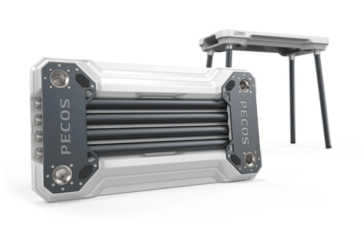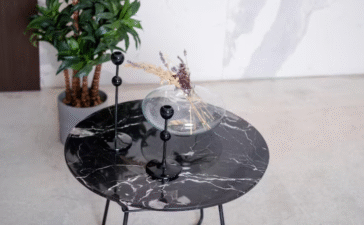Bamboo shades have become a go-to choice for homeowners looking to add a touch of natural warmth and texture to their interiors. Their organic look and light-filtering capabilities make them a stylish addition to living rooms and bedrooms. But when it comes to the bathroom, a space defined by steam, humidity, and the need for absolute privacy, the question becomes more complex. Are bamboo shades Bathrooms a good choice for bathrooms?
The answer isn’t a simple yes or no. It depends on your bathroom’s conditions, your privacy needs, and your willingness to perform regular maintenance. This guide will walk you through everything you need to know about using bamboo shades in a bathroom, from moisture resistance and privacy liners to style inspiration and cleaning, so you can make an informed decision for your home.
What Exactly Are Bamboo Shades?
Bamboo shades, often called woven wood shades or natural bamboo blinds, are window coverings crafted from natural materials like bamboo, reeds, jute, and grasses. These organic fibers are woven together to create a textured, semi-transparent fabric. This construction allows them to gently filter sunlight, casting a warm, inviting glow into a room.
Homeowners are drawn to them for their eco-friendly properties and their ability to bring a natural, spa-like element indoors. They come in various styles, including classic bamboo roman shades that fold up neatly, sleek roller shades, and modern cordless or top-down/bottom-up designs that offer flexible light and privacy control. Their unique aesthetic makes them a compelling option for a bathroom renovation, promising to turn a functional space into a serene retreat.
Can Bamboo Shades Bathrooms Handle Bathroom Humidity?
The primary concern with using bamboo shades bathroom is moisture. Because bamboo is a natural material, it can react to high levels of humidity. In a poorly ventilated bathroom, prolonged exposure to steam from hot showers can cause potential problems like warping, stretching, or even the growth of mold and mildew on the organic fibers. Discoloration can also occur over time.
However, this doesn’t mean you have to rule them out completely. Moisture-resistant bamboo shades are suitable for bathrooms that have good ventilation, such as those with a powerful exhaust fan or a window that can be opened. They are also an excellent choice for half-baths or powder rooms where steam is not a factor. If your bathroom is small, lacks proper ventilation, and regularly feels like a sauna, you might be better off with a synthetic alternative. Faux wood shades and vinyl blinds offer the look of natural materials but are completely waterproof and will not warp, fade, or grow mold. When considering bamboo vs. faux wood, the decision often comes down to balancing authentic style with practical durability.
Privacy Liners: A Non-Negotiable for Bathrooms
Standard bamboo shades Bathrooms are woven with small gaps between the reeds, which allows light to filter through beautifully. However, these same gaps can compromise privacy, especially at night when the lights are on inside. For a bathroom, this is a significant drawback.
The solution is to add a liner. A liner is a secondary piece of fabric attached to the back of the shade, and it is essential for any bathroom application. There are two main types:
- Privacy Liner: This light-filtering fabric blocks the view from outside without completely darkening the room. You’ll still get a soft, diffused glow during the day, but silhouettes will not be visible from the street at night.
- Blackout Liner: This opaque fabric completely blocks light and offers total privacy. Blackout bamboo blinds are an ideal choice if your bathroom window faces a neighbor or a busy street.
For ultimate privacy, you can also layer your bamboo shades with waterproof curtains or apply a frosted film directly to the window glass. This combination ensures privacy even when the shades are partially raised.
Bathroom Style and Design Inspiration
Bamboo shades are a designer favorite for creating natural, spa-like bathroom aesthetics. Their texture and warmth instantly elevate a space, making it feel more organic and calming. They pair beautifully with a wide range of décor styles.
In a coastal bathroom, natural-toned bamboo complements light woods and shades of blue and white. For a bohemian or boho-chic space, they add an earthy element that works well with houseplants and macrame accents. In modern and minimalist bathrooms, the clean lines of bamboo shades can soften hard surfaces like tile and concrete, adding necessary warmth without creating clutter.
Popular colors range from light, natural tones and airy whitewashed finishes to rich, dark stains like walnut or espresso. These varied finishes allow you to match the shades to your vanity, flooring, or other design elements. A quick search for “bathroom with bamboo shades ideas” on Pinterest will reveal countless examples of how these versatile window treatments can complete a design.
How to Measure and Install Bamboo Shades
Proper installation is key to ensuring your bamboo shades Bathrooms look great and provide adequate privacy. You can choose between an inside mount or an outside mount.
An inside mount fits within the window frame for a clean, built-in look. For this, you need to measure the width and height of the window frame’s interior precisely. An outside mount is installed on the wall or trim above the window, which can make a window appear larger and is useful for covering imperfections in the frame.
When you measure for bamboo blinds in a bathroom, be precise to avoid unsightly gaps that could compromise privacy. If you’re opting for an inside mount, measure the width at the top, middle, and bottom of the frame and use the narrowest measurement. For cordless options, which offer a safer and cleaner look, this precision is even more important. Motorized bamboo shades are another excellent option, offering the convenience of remote-controlled operation perfect for hard-to-reach windows over a tub.
Cleaning and Maintaining Bamboo Shades Bathrooms in a Bathroom
To ensure your bamboo shades last, proper care is essential. Regular light cleaning is simple: use a feather duster or the soft brush attachment on your vacuum to remove dust. To clean bamboo shades in a bathroom more thoroughly, you can use a cloth lightly dampened with water and a mild soap solution, but never saturate the material.
The best way to prevent mold on bamboo blinds is to ensure good airflow. Always use your bathroom’s exhaust fan during and after showers, and open a window if possible. In extremely humid climates, a small dehumidifier can also help. With proper care and good ventilation, you can expect your bamboo shades to maintain their beauty for many years.
The Cost of Bamboo Shades Bathrooms and Where to Buy
The cost of bamboo shades varies widely. Ready-made shades from big-box stores are an affordable option, often priced between $50 and $150 per window. However, custom bamboo shades from online retailers or local window treatment specialists offer far more options for size, color, liners, and lift systems. While custom shades are more expensive, they provide a perfect fit and a higher-quality finish, which is often worth the investment for a space like a bathroom.
When comparing the bamboo shades’ cost to synthetic alternatives, you’ll find that high-quality faux wood blinds are often in a similar price range. The decision ultimately comes down to whether you prioritize the authentic, natural beauty of real bamboo or the worry-free durability of a waterproof material.
You would also like: “bathroom chandeliers“
The Final Verdict: Weighing the Pros and Cons
So, should you use bamboo shades in your bathroom? Here’s a summary to help you decide.
Pros:
- Aesthetic Appeal: They add unmatched natural warmth, texture, and style.
- Eco-Friendly: Made from sustainable, renewable resources.
- Light Control: They offer beautiful light filtering, and with liners, you can customize privacy.
Cons:
- Moisture Sensitivity: They can warp or grow mold in high-humidity, poorly ventilated bathrooms.
- Privacy Concerns: They require a liner for use in a bathroom.
- Maintenance: They need regular dusting and care to prevent damage.
Ultimately, bamboo shades Bathrooms are an excellent choice for a bathroom, provided you take the right precautions. They work best in well-ventilated bathrooms or powder rooms and should always be paired with a privacy or blackout liner. If you love the look but your bathroom is perpetually damp, a high-quality faux wood blind might be a more practical choice.
Frequently Asked Questions
Are bamboo shades waterproof?
No, real bamboo shades are not waterproof. They are made from natural materials that can absorb moisture, which may cause them to warp, discolor, or develop mold over time. For a fully waterproof option, consider faux wood blinds or vinyl shades.
Do bamboo shades Bathrooms provide privacy at night?
On their own, unlined bamboo shades do not provide adequate privacy at night. The small gaps in the weave allow light to pass through, and silhouettes can be visible from the outside when interior lights are on. To ensure privacy, it is essential to add a privacy or blackout liner to the back of the shade.
Can you put bamboo blinds in a humid bathroom?
You can, but with caution. Bamboo blinds are best suited for well-ventilated bathrooms with a powerful exhaust fan or a window that can be opened to clear steam quickly. In a small, steamy bathroom without good airflow, the high humidity can damage the natural fibers.
What is the best liner for bamboo shades in bathrooms?
The best liner depends on your needs. A privacy liner is a great all-around choice, as it blocks the view from outside while still allowing soft, filtered light into the room. A blackout liner is ideal if your bathroom window faces a public area or a neighbor’s house and you require 100% privacy and light blockage.
How long do bamboo shades Bathrooms last in a bathroom?
With proper care and in a well-ventilated bathroom, high-quality bamboo shades can last for many years. Longevity depends on minimizing their exposure to direct moisture and high humidity, as well as regular cleaning to prevent dust and mildew buildup. In a frequently used, steamy bathroom, their lifespan may be shorter compared to other rooms.












